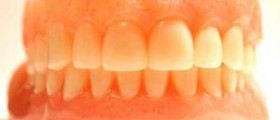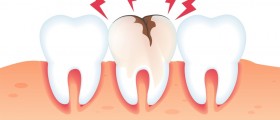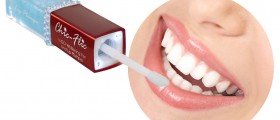Too much calcium in any part of the body, including teeth, nails or bones, can cause different side effects. Calcium deposits can be seen as white or even brown spots on the teeth. They usually appear because of problems related to the growth and development of the teeth.
Sometimes, ameloblast cells (tooth enamel) might add too much calcium to the mix to synthesize the teeth and thus cause white spots on them. Proper dental hygiene will prevent calcium deposits in children, and therefore, parents are strongly advised to take care of their children’s teeth, from the moment they appeared.

Calcium deposits on the teeth were earlier associated with poor diet and lack of certain vitamins, but in fact, they develop during the development of the teeth and have nothing to do with the early reasoning.
In most cases, the spots affect only the surface and don’t go deep inside the inner material of the teeth. Since these white and brown spots are only superficial, there are several different ways to remove them from your teeth.
- The mature enamel contains inorganic compounds occurring mostly in the form of highly organized and tightly packed crystals that constitute 87% of enamel volume and 95% of its weight.
- According to the available literature data, the mean calcium content in the superficial layer of tooth enamel free from pathological changes is 1.85 mg/L. In this paper, the mean calcium concentration of 1.42 mg/L was obtained on the enamel surface of the study teeth, while the mean concentration of this mineral for the entire enamel was 10.7175 mg/L.
- It has been found that the calcium content increases with enamel depth. According to some authors, the content of calcium and phosphates decreases starting from the surface to enamel amelodental unit, which is correlated with the decreasing mineral density of enamel.
- The studies on teeth with hypomineralization showed that the mean calcium-to-phosphorus ratio was significantly lower, and the magnesium content was slightly higher compared to healthy teeth.
- Since calcium and magnesium are interdependent, and the calcium content should increase with growing magnesium content, a suggestion arises that the reduction in calcium-to-phosphorus ratio in teeth with abnormal enamel structure is related to an increase in the phosphorus content, and not the elimination of calcium.
Professional Help
Always consult the dentist, to figure out what’s going on with your teeth and to examine all possible options for the removal of the spots that appeared on them. The dentist will be able to establish the reason for the discoloration of your teeth and suggest an appropriate treatment.
The professional therapy might include fluoride treatment if the spots on your teeth were caused by the lack of fluorides. Air abrasion is another option for people suffering from teeth spots. The dentist can blow crystal pieces on your teeth to cover the deposits of calcium, using the blowing machine.
Bonding procedure or adding the veneers may also be very helpful for the teeth spots. The bonding procedure includes different techniques and procedures, in order to recover the whiteness of your teeth. Using this procedure, your dentists may decide to repair the broken tooth or remove discoloration and teeth spots. Porcelain veneers that completely cover your teeth are another potential option.
This is a procedure very common and popular in cosmetic dentistry, but it can also protect your teeth, besides beautifying them. In situations when calcium deposits have covered your teeth completely, your dentist may suggest covering the teeth with porcelain veneers.
What Can You Do at Home
Sometimes, all you need to do is to find yourself a proper toothpaste that will eliminate the calcium spots. People say that the mix of baking soda and hydrogen peroxide may remove these spots. Calcium deposits located deep in the teeth may need some time to be removed, so be persistent.

















Your thoughts on this
Loading...